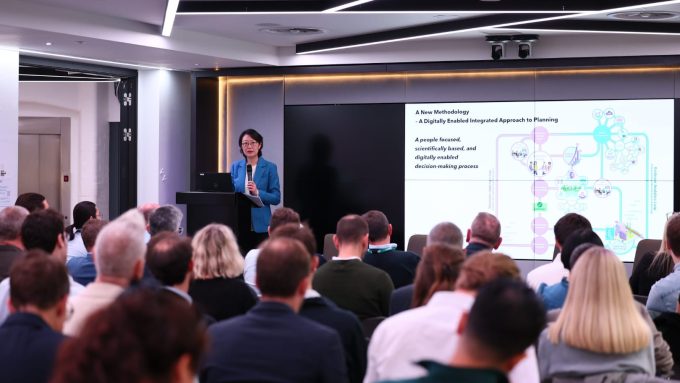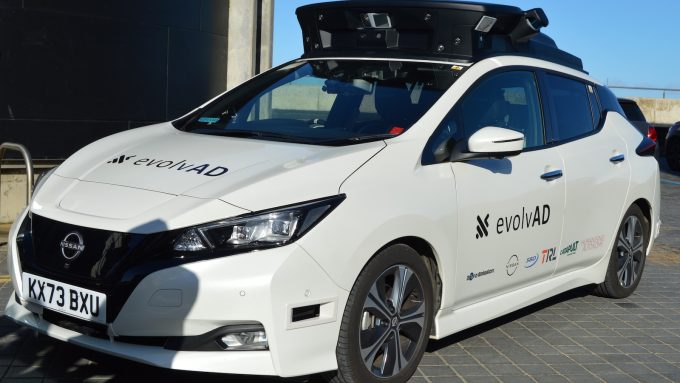
Following an Innovate UK’s (IUK) Infrastructure Systems 2 competition in 2018, Costain together with Sensat and Connected Places Catapult, set up a collaborative Research & development programme to trial the use of drones in a Beyond Visual Line of Sight (BVLOS) manner, to understand the feasibility of effecting improvement in road construction projects with drone technology. The project was part of the Government Drone Pathfinder programme.
Pathfinder projects are working on challenges to help support the UK in the global race to roll out regulations and innovation to allow routine BVLOS drone flights.
The safe and successful development of BVLOS operations of drones is considered critical to the commercial exploitation of drone technologies. It will enable industries such as the infrastructure construction sector to create skilled jobs, remove people from harm’s way and create new opportunities in the supply chain.
The primary aim of the project was to conduct the feasibility of BVLOS flights in a controlled and uncontrolled airspace and demonstrate the viability to the end-user, the construction sector represented by Costain.
It also set out to provide Costain and the architecture, engineering and construction (AEC) industry with more cost effective and efficient data capture by utilising regular and routine BVLOS operations with UASs, as well as validating the regular and routine BVLOS operations of drones and lastly, to inform the government on the development of aviation regulation relating to drone BVLOS operations in the UK.
During the 12-month project Sensat, an SME, succeeded in extending their drone expertise and obtaining authorisation for segregated drones BVLOS operation. Sensat successfully gained exemptions from the Civil Aviation Authority to fly up to 12 KM from the Remote Pilot within controlled airspace. This was gained by submitting an operations manual that met the stringent safety and airspace deconfliction requirements.
The project succeeded in flying 6 kms of BVLOS flight tests along the A14 corridor but was unable to prove the criteria for routine, safe and sustainable operations due to a drone malfunction. The project succeeded with two main trials; the first in East Sussex trialling the flight control systems and emergency procedures and a second over the A14 project in Cambridgeshire. Both trials were carried out safely and in conjunction with local stakeholders. Unfortunately, the evidence of ‘routine’ BVLOS operations was compromised due to existing regulations and the operational capacity of the chosen UAS system. Sensat were able to demonstrate good key learnings for any future BVLOS trials.
Part of the project was to supply infrastructure projects with data collected under BVLOS conditions. Although Sensat were able to collect data during each of the trials over the A14, none of it was deemed usable – this was due to the camera technology on the drone. Alternative measures were used, and higher quality data was provided to the A14, collected under Extended Visual Line of Sight (EVLOS) exemptions to provide a business case for using such data in the future.
The initial scope of the project, created by IUK in 2016, focused on the commercial viability of BVLOS operations. It was expected that by 2021, BVLOS operations would be commonplace. The project found it more difficult than expected to run regular and routine fight trials. As a result, the project focus shifted to demonstrating how BVLOS trials could be adopted in the future and the required steps that need to be taken.
Lessons Learned
Flying hasn’t been the biggest lesson… the paperwork has!
The operational planning, communications and submissions have been the key learning processes throughout the project.
- Balancing stakeholder requirements
- Time scales – understanding the time it takes
- Working within current regulations
- The TDA is the biggest enabler and at the same time, biggest inhibitor,
- of routine BVLOS operations
- Supplier choice of BVLOS UAS – we should have had multiple suppliers
Although the Infrastructure Pathfinder didn’t deliver all of its objectives, it did produce significant results that will feed into both the architecture, engineering and construction industry’s drive to constantly improve through innovation, and future Pathfinders projects to support the UKs ambition routine drone Beyond Visual Line of Sight operations.
Project Completed: September 2019
Latest Updates
Download the latest project update presentation from the recent Drone Pathfinder Community Day





